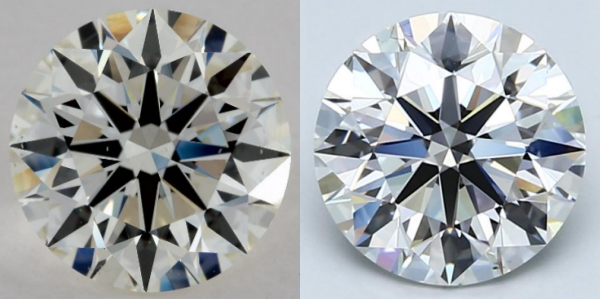Diamonds are timeless symbols of luxury and elegance. When buying or evaluating diamonds, understanding their quality is essential. The diamond 4Cs chart is the industry standard used to assess a diamond’s quality. The 4Cs—Cut, Color, Clarity, and Carat weight—offer a comprehensive way to judge a diamond’s value. Let’s explore each of these aspects in detail to help you make an informed choice.
Table of Contents
The Importance of Cut in the Diamond 4Cs Chart
The first and arguably most critical factor on the diamond 4Cs chart is the cut. A diamond’s cut determines its brilliance, fire, and overall visual appeal. This factor doesn’t refer to a diamond’s shape but rather how well it has been cut and faceted. The cut quality affects how light interacts with the stone, creating sparkle and brightness.
When reviewing a diamond 4Cs chart, you’ll notice various cut grades ranging from “Excellent” to “Poor.” An excellent cut maximizes light return, creating that signature brilliance. Conversely, a poorly cut diamond will appear dull, even if it has perfect color or clarity. Understanding the cut grade helps ensure that your diamond will shine beautifully in any setting.
Color: A Key Element in the Diamond 4Cs Chart
Color is another vital component of the diamond 4Cs chart. Diamonds are graded on a scale from D (colorless) to Z (light yellow or brown). Colorless diamonds are rare and highly valued, as they allow the most light to pass through, resulting in exceptional sparkle.
When examining the diamond 4Cs chart, consider that even slight color variations can impact a diamond’s appearance and price. For example, diamonds in the D-F range are considered colorless, while those in the G-J range are near colorless. Choosing a diamond with a higher color grade ensures that it retains a pure and brilliant look, especially when set in white gold or platinum.
Clarity and Its Role in the Diamond 4Cs Chart
Clarity refers to the presence of internal or external flaws, known as inclusions and blemishes. The diamond 4Cs chart classifies clarity on a scale from Flawless (FL) to Included (I1, I2, I3). Flawless lab made diamonds have no visible imperfections under 10x magnification, making them extremely rare and valuable.
Most diamonds contain some inclusions, but many are microscopic and do not affect the stone’s beauty. The diamond 4Cs chart helps buyers determine how these imperfections impact a diamond’s overall appearance and value. For example, a diamond graded as Very Slightly Included (VS1 or VS2) will have tiny inclusions that are difficult to detect without magnification, offering excellent value without compromising beauty.
Carat Weight: The Final C on the Diamond 4Cs Chart
Carat weight is often the most well-known aspect of the diamond 4Cs chart. It measures the diamond’s size, with one carat equaling 200 milligrams. Larger diamonds are rarer and more expensive, but carat weight alone does not determine a diamond’s value.
When reviewing the diamond 4Cs chart, it’s essential to balance carat weight with cut, color, and clarity. A smaller diamond with an excellent cut and high color grade can be more stunning than a larger diamond with poor quality in other areas. Understanding carat weight helps buyers find the best combination of size and quality within their budget.
Using the Diamond 4Cs Chart to Make an Informed Choice
The diamond 4Cs chart is more than just a tool for professionals; it’s a guide for anyone looking to invest in a diamond. By understanding each C—Cut, Color, Clarity, and Carat weight—you can evaluate diamonds more effectively and choose one that suits your preferences and budget.
When comparing diamonds, always refer to a diamond 4Cs chart to see how each stone measures up. This approach ensures that you consider all critical factors, rather than focusing solely on carat weight or color. Many jewelers provide detailed 4Cs charts with their diamonds, offering transparency and confidence in your purchase.
Conclusion: The Diamond 4Cs Chart as Your Buying Guide
Navigating the world of diamonds can be overwhelming, but the diamond 4Cs chart simplifies the process by breaking down the key quality factors. By understanding the importance of cut, color, clarity, and carat weight, you can make a more informed and satisfying choice. Each element on the diamond 4Cs chart contributes to the overall beauty and value of a diamond, helping you select a gem that will be cherished for a lifetime.
Investing in a diamond is a significant decision, and using the diamond 4Cs chart as a guide ensures that you get the best quality for your money. Whether you’re buying an engagement ring or a special gift, mastering the 4Cs will empower you to make a confident and well-informed choice.




